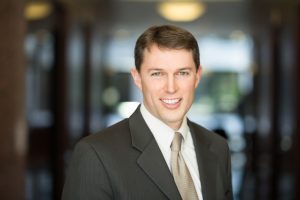The USPTO has released updated subject matter eligibility guidance that incorporates comments on the changes made in January 2019. The guidance is 22 pages long, with three appendices and 87 footnotes. Below are a few of the more salient points from a patent applicant’s perspective:
(I) “Reciting” judicial exceptions
Claims can “recite” a judicial exception either by explicitly “setting forth” an abstract idea (e.g., Diamond v. Diehr), or by “describing” an abstract idea (e.g., Alice Corp. v. CLS Bank). This tends to hurt patent applicants because it provides Examiners latitude to depart from the actual claim language to justify 101 rejections.
Examiners should not “parse” claims that include multiple judicial exceptions (e.g., multiple abstract ideas) to analyze them individually. Rather, such multiple exceptions may be identified but should be evaluated together. This tends to help patent applicants. Examiners in the past have parsed claims into small building blocks to argue the entire combination is abstract, contrary to the warning in Alice to “tread carefully” because as explained by the Supreme Court in Mayo v. Prometheus, at some level, “all inventions . . . embody, use, reflect, rest upon, or apply laws of nature, natural phenomena, or abstract ideas.”
(II) Abstract idea “enumerated groupings”
Math concepts
Claim language that is merely “based on” or “involves” a math concept is not abstract if the claim does not “recite” a mathematical relationship, formula, equation, or calculation (as in Examples 41, 43, and 45). This marginally helps patent applicants where Examiners may stretch to find math underlying a claim to justify ineligibility. But this benefit is largely offset by the PTO’s generalization from Alice that a claim “recites” an abstract idea even if an examiner can characterize it as describing one.
Human activity
Only “certain” methods—not all methods—of “organizing human activity” are abstract ideas. However, this category may apply to even a single person (or a single person and a computer), so the number of people involved is not dispositive.
A finding that an economic practice is “old” or “well-known” may indicate it is “fundamental,” but it can be found fundamental even if not old or well known. This tends to hurt patent applicants because it may encourage Examiners to assert concepts are fundamental without prior art or other evidence.
The guidance specifically refers Examiners to many case examples finding ineligibility under the “methods of organizing human activity” category, but no cases finding eligibility of claims under this category.
Mental processes
Both product and process claims may recite a “mental process.” The guidance provides three case examples that were eligible because the human mind was “not equipped to perform” the claim limitations.
- SiRF Technology, Inc. v. International Trade Commission, 601 F.3d 1319, 1331-33 (Fed. Cir. 2010).
- SRI Int’l, Inc. v. Cisco Systems, Inc., 930 F.3d 1295, 1304 (Fed. Cir. 2019).
- Research Corp. Techs. v. Microsoft Corp., 627 F.3d 859, 868 (Fed. Cir. 2010).
Claims that can be entirely performed in the mind (without a computer) are abstract, and claims requiring a computer may still recite a mental process. However, the guidance cites CyberSource to state a claim limitation that “could not, as a practical matter, be performed entirely in a human’s mind” (even if aided with pen and paper) would not qualify as a mental process.
(III) Integrating abstract ideas into practical applications
To determine if a claim that includes an abstract idea is nonetheless practical enough to be eligible for patenting, Examiners should consider whether it improves technology or implements a particular machine. “Specificity of the claim limitations” and “imposing meaningful limits” on an abstract idea can help demonstrate eligibility in this context.
Showing a claim recites improved technology is very helpful to applicants in all fields (not just computers).
Examiners should look for a “technical explanation” of improvement in the specification, making it apparent to a person of ordinary skill. Declaration evidence (under 37 C.F.R. 1.132), such as written testimony indicating how one of ordinary skill in the art would interpret the disclosed invention as improving technology, can be used to demonstrate this. Improvement to a judicial exception itself (e.g., a business practice of market trading) is not necessarily an improvement in technology.
(IV) Making a prima facie case under 101
The initial burden is on the examiner to explain clearly and specifically why a claim is ineligible, so that the applicant has sufficient notice and is able to effectively respond. Whenever practicable, examiners should indicate how subject matter eligibility rejections might be overcome.
Examiners must expressly support findings that elements are “well-understood, routine, conventional activity in the relevant field” with evidence (Section III.A. of the Berkheimer Memorandum).
(V) Application of 101 Guidance
On appeal to the PTAB, an applicant may rely upon the 2019 PEG in support of his or her argument that a rejection under § 101 is in error.
